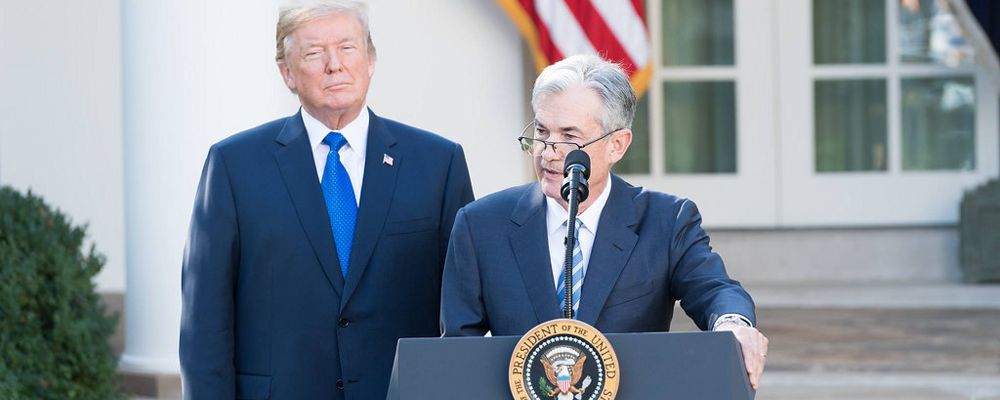The biggest risk to the US economy?
- Sunday, December 16, 2018
 In early October, the Federal Reserve Chairman Jerome Powell expressed his delight that the US economy was going very well by saying, ‘We are enjoying a remarkable set of economic circumstances’. The US economy saw jobless figures fall to 3.7% and GDP growth running at 3.5% per annum. Soon after he made these comments, the US 10-year Treasury bond yield rate rose to 3.23% as investors demanded higher returns due to the expected interest rate rises and inflation. However, the good news was short lived with the start of October’s stock market falls.
In early October, the Federal Reserve Chairman Jerome Powell expressed his delight that the US economy was going very well by saying, ‘We are enjoying a remarkable set of economic circumstances’. The US economy saw jobless figures fall to 3.7% and GDP growth running at 3.5% per annum. Soon after he made these comments, the US 10-year Treasury bond yield rate rose to 3.23% as investors demanded higher returns due to the expected interest rate rises and inflation. However, the good news was short lived with the start of October’s stock market falls.
To add further injury to Mr Powell, President Trump branded the Fed as ‘the biggest risk to the US economy’ and that Mr Powell was ‘happy’ to be raising rates ‘every time we do something great, he raises interest rates’.
To be fair to Jay Powell, the recent economic data has been truly exceptional. Unemployment is at a 50-year low, small business optimism is at record levels as measured by the US small business optimism index and inflation still at 2.3% in October. This economic growth has been fuelled by Donald Trump’s fiscal stimulus and government spending. Trump is deliberately running the US economy ‘hot’ by injecting US$ 1.5tn in tax cuts over the next 10 years coupled with additional infrastructure spending. This combination could push the USA GDP growth for 2018 to as high as 3%. Not surprisingly, such a policy comes with some risk. The most obvious being rising interest rates and bond yields, a stronger US$ and increases to the national debt due to the loss of corporation tax receipts in the short term.
The US budget deficit is predicted to be 3.9% of GDP for 2018 rising to 4.7% in 2019. These figures are far higher than the deficit percentages that is causing the new Italian coalition government and the EU to fall out.
Donald Trump may only be heating the economy for his own short-term electoral success but there are some positives emerging from his actions. There has been a surge in investment in the US. Companies are recognising the challenges of the future. Growth in a tight labour market with rising labour costs has accelerated investment into technology and artificial intelligence in order to boost productivity.
The US took on a further 250,000 new jobs in October well ahead of expectations. Employers are now looking to offer full-time work to part timers and re-employing workers that have recently retired to satisfy demand.
In the past the Federal Reserve has cut interest rates and markets have become used to being bailed out every time there is a hint of a stock market wobble. This may not be the case going forward. US wage growth has remained relatively modest but both wage growth and consumer price inflation have recently stated to pick up. For the 12 months to October CPI increased by 2.3% and underlying core inflation was 2.1%. Annual wage growth hit 3.1 % in October, up from 2.8% in September. Wage growth is now at a nine year high and is rising ahead of inflation. If this trend continues it is expected that the Fed will stick to its plan and implement a December rate rise. Jerome Powell’s prime responsibility is to control US inflation and maintain sound economics, while Donald Trump wants to maintain power.

Chris Davies
Chartered Financial AdviserChris is a Chartered Independent Financial Adviser and leads the investment team.
About Estate Capital
Financial Services
Our Contacts
7 Uplands Crescent,
Swansea, South Wales,
SA2 0PA.
Tel: 01792 477763
